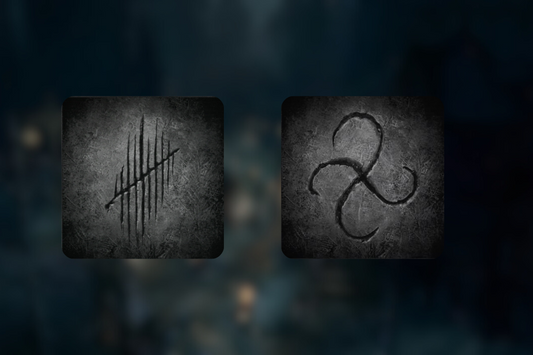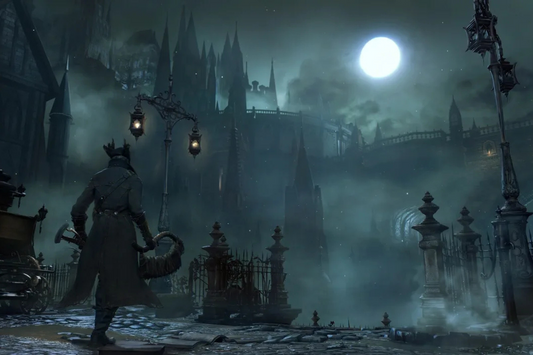FromSoftware has established itself as the gold standard in action RPGs, and Elden Ring and the Dark Souls series represent two of their most celebrated creations. Both games share similar DNA, yet they stand apart in design, narrative, and gameplay. Elden Ring builds on the foundation laid by Dark Souls while charting a bold new course in open-world gaming.
In this comparison, we’ll break down the key differences between Elden Ring and Dark Souls, examining how FromSoftware innovated while staying true to its core philosophy.
1. World Design
Dark Souls: Interconnected Yet Linear
The world design in Dark Souls is renowned for its tight, interconnected layout. Each area is meticulously crafted to connect seamlessly, creating a sense of discovery and cohesion. Players unlock shortcuts and traverse intricate paths, with the illusion of a sprawling world built on smartly layered design. While the game features some open exploration, progression is often linear, requiring players to follow specific paths to advance.
Key Features:
- Interconnected levels with shortcuts.
- Limited exploration within confined zones.
- Metroidvania-style progression, unlocking areas as players obtain key items or defeat bosses.
Elden Ring: A Vast, Open World
Elden Ring expands on FromSoftware's formula by introducing a fully realized open world. The Lands Between is an expansive, seamless environment filled with diverse biomes, hidden dungeons, and dynamic encounters. Players have the freedom to explore vast regions at their own pace, choosing their path and objectives. This shift to open-world design marks a dramatic departure from the tighter, corridor-like maps of Dark Souls.
Key Features:
- A sprawling open world with no strict progression.
- Points of interest, such as dungeons, ruins, and towers, scattered across the map.
- A day-night cycle and weather effects add to immersion.
2. Combat and Gameplay
Dark Souls: Methodical and Punishing
Combat in Dark Souls is methodical, requiring patience, timing, and mastery of mechanics. Encounters are often close-quarters, and success hinges on managing stamina, dodging, and learning enemy attack patterns. Shields play a prominent role, emphasizing defense over offense.
Key Features:
- Stamina management is critical.
- Shields and defensive strategies are central.
- Fixed encounters that reward memorization.
Elden Ring: Fluid and Versatile
Elden Ring refines the combat formula by adding new layers of versatility. Players can experiment with more tools, including mounted combat and Ashes of War, which offer customizable abilities for weapons. The increased mobility, especially with the introduction of jumping attacks and a dedicated mount (Torrent), gives combat a faster, more dynamic feel.
Key Features:
- Freedom to engage in mounted combat or fight on foot.
- More emphasis on player creativity with weapon arts and magic.
- Stealth mechanics allow for non-confrontational strategies.
3. Exploration and Freedom
Dark Souls: Guided Exploration
Exploration in Dark Souls is tightly controlled, with carefully placed enemies, traps, and secrets. While players can backtrack and uncover hidden paths, they are often directed toward specific objectives. The game limits your freedom to ensure the experience feels deliberate and tense.
Key Features:
- Hidden paths and secrets within confined spaces.
- Linear progression interspersed with optional side areas.
- High-risk exploration rewarded with key items or shortcuts.
Elden Ring: Open-Ended Discovery
Elden Ring emphasizes freedom, letting players choose where to go and what to do. There are no hard barriers, and progression is tied to player exploration rather than strictly following a main path. This approach rewards curiosity, with treasures, hidden bosses, and lore scattered across the world.
Key Features:
- Exploration is non-linear, with multiple paths to major objectives.
- The open world is punctuated by smaller, self-contained dungeons.
- Players can tackle challenges in any order, often circumventing difficult areas.
4. Storytelling and Lore
Dark Souls: Opaque and Fragmented
Dark Souls is famous for its cryptic storytelling. The lore is revealed through item descriptions, NPC dialogue, and environmental clues, encouraging players to piece together the narrative themselves. The story revolves around cycles of fire and darkness, with themes of decay, power, and the inevitability of change.
Key Features:
- Sparse storytelling with minimal exposition.
- NPCs have vague dialogue and hidden questlines.
- Heavy reliance on environmental storytelling.
Elden Ring: Expansive Yet Mysterious
While Elden Ring retains FromSoftware’s signature cryptic style, it introduces a more expansive narrative crafted in collaboration with George R.R. Martin. The world of The Lands Between has a grander scale of storytelling, with detailed lore about the Great Runes, demigods, and the fall of the Golden Order. Players still piece together the story, but the scope and detail of the world’s mythos are much larger.
Key Features:
- A broader mythological backdrop was created with George R.R. Martin.
- The narrative focuses on the Shattering of the Elden Ring and its consequences.
- More NPCs with detailed questlines and motivations.
5. Character Customization and Builds
Dark Souls: Structured Builds
Dark Souls offers deep character customization, with a variety of classes, stats, and weapons to tailor builds. However, the choices are often tied to specific play styles, such as melee combat, magic, or hybrid builds. Respeccing is limited, making early choices more significant.
Key Features:
- Fixed starting classes with defined stats.
- Limited respeccing options.
- Focus on specializing in a single build.
Elden Ring: Unprecedented Freedom
Elden Ring takes character customization to new heights. Players have access to Ashes of War, which allow them to customize weapon skills and affinities, offering unparalleled flexibility. The game also introduces a more forgiving respeccing system, encouraging players to experiment with different builds.
Key Features:
- Ashes of War for customizing weapons.
- Easier respeccing through Rennala.
- Expanded magic system with diverse spell categories.
6. Boss Design
Dark Souls: Challenging and Memorable
Dark Souls features tightly designed bosses that test players' skill and patience. These encounters often serve as gatekeepers to new areas, with memorable designs such as Artorias, Ornstein and Smough, and the Abyss Watchers. The difficulty curve gradually builds, and bosses are often tied to the game’s lore.
Key Features:
- Intense, one-on-one combat against iconic bosses.
- Boss difficulty scales linearly with progression.
- Encounters reward careful observation and precision.
Elden Ring: Epic and Varied
Elden Ring ups the ante with more bosses and greater variety. From massive dragons to humanoid knights, the game offers a wider range of encounters. Open-world bosses, like the Tree Sentinel or Flying Dragon Agheel, add excitement to exploration, while dungeon bosses provide traditional challenges. Some bosses also have multiple phases with dynamic attack patterns.
Key Features:
- Open-world and traditional bosses coexist.
- Bosses vary in size, scale, and mechanics.
- Dynamic boss phases increase complexity.
7. Technical and Visual Design
Dark Souls: Atmospheric and Intimate
Dark Souls is known for its oppressive, gothic atmosphere. The visual design emphasizes decay and ruin, with a focus on smaller, intricately detailed spaces. While not cutting-edge by today’s standards, the game’s artistic direction remains timeless.
Key Features:
- Dark, gothic environments.
- Smaller, focused zones with detailed textures.
- Intimate level design prioritizing atmosphere.
Elden Ring: Grand and Expansive
Elden Ring’s visual design embraces grandeur. The Lands Between is filled with vast vistas, towering structures, and diverse environments that range from golden fields to hellish wastelands. The game also takes advantage of modern hardware to deliver stunning graphics and smoother performance.
Key Features:
- Expansive, breathtaking landscapes.
- Diverse biomes with distinct aesthetics.
- Improved graphical fidelity and performance.
Conclusion
Dark Souls and Elden Ring share a lineage of punishing combat, cryptic lore, and intricate world design, but they cater to different player experiences. Dark Souls excels in delivering a tightly crafted, atmospheric journey, while Elden Ring pushes the boundaries of open-world design and player freedom.
For fans of FromSoftware’s games, the choice between the two depends on personal preference. If you enjoy meticulously designed environments and linear progression, Dark Souls is the ultimate experience. If you crave exploration, experimentation, and epic scale, Elden Ring sets a new benchmark for the genre. Either way, both games solidify FromSoftware’s legacy as a master of action RPGs.








